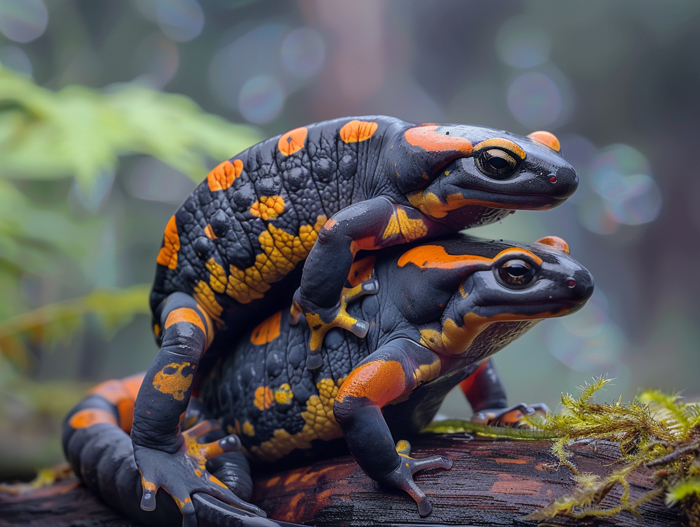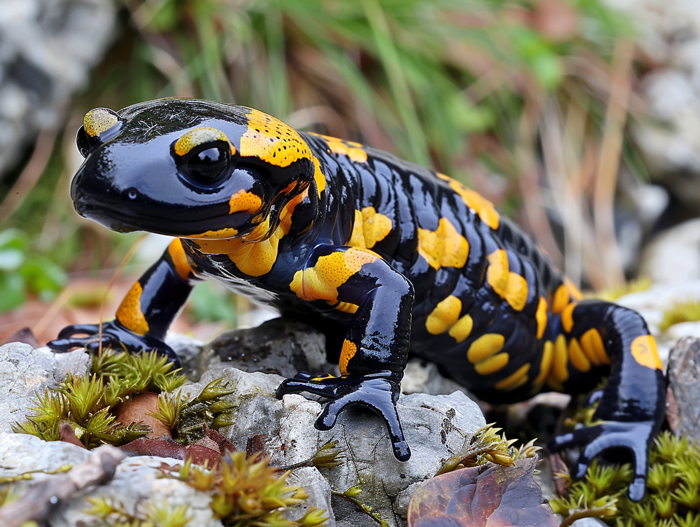Curious about whether salamanders are cold-blooded? In this text, we’ll jump into the intriguing area of these amphibians and explore the truth behind their thermoregulation. Understanding whether salamanders are cold-blooded or not can shed light on their behavior and habitat preferences. Let’s unravel the mystery together!
Salamanders are intriguing creatures that have captured the interest of scientists and nature enthusiasts alike. By delving into their unique characteristics and biological makeup, we can uncover the answer to the age-old question: are salamanders cold-blooded? Join us on this exploration as we uncover the science behind these elusive and captivating amphibians.
Key Takeaways
- Salamanders are cold-blooded amphibians that rely on external sources to regulate their body temperature.
- They inhabit diverse environments like forests and aquatic habitats, adapting their behavior to manage body temperature effectively.
- Salamanders have unique biology, including the ability to regenerate lost body parts and breathe through their moist skin.
- Understanding their metabolic rate and behavioral patterns is essential to comprehend how salamanders thermoregulate.
Understanding Salamanders and their Biology

Welcome to the intriguing area of salamanders. These amphibians are known for their remarkable biology, including their unique ability to regenerate lost limbs and tails. Let’s dive deeper into the key aspects of salamander biology:
Key Terms:
- Amphibians: Cold-blooded vertebrates that typically live part of their lives in water and on land.
- Regeneration: The process by which salamanders can grow back lost body parts.
Main Features of Salamander Biology:
- Habitat Diversity: Salamanders can be found in a variety of habitats, including forests, streams, and caves.
- Skin Structure: Salamanders have moist skin that helps them breathe through their skin and stay hydrated.
- Life Cycle: They go through a metamorphosis from water-breathing larvae to air-breathing adults.
- Some species of salamanders can live up to 20 years.
- The axolotl can remain in its larval form throughout its life, a unique trait among amphibians.
- Salamanders use their tongue to capture prey, which can be insects, worms, or even small fish.
The Debate: Are Salamanders Cold-Blooded?

Defining Cold-Bloodedness in Salamanders
- Cold-blooded, also known as ectothermic, refers to animals that depend on external sources to regulate their body temperature.
- Salamanders fall under this category, relying on their environment to maintain warmth rather than generating it internally like warm-blooded animals.
- Habitat: Salamanders inhabit diverse environments, from terrestrial forests to aquatic habitats, affecting their exposure to varying temperatures.
- Behavior: Their activity levels, such as basking in the sun or seeking shade, play a role in managing body temperature.
- Physiology: Skin structure and metabolism impact how efficiently salamanders absorb heat to regulate their internal temperature.
Scientific Research on Salamanders’ Thermoregulation
Leveraging scientific research helps us understand how salamanders manage their body temperature effectively. Let’s jump into key studies shedding light on this intriguing aspect.

Studies on Salamanders’ Metabolic Rate
- Metabolic rate influences how salamanders maintain their body temperature.
- Researchers analyze oxygen consumption to gauge metabolic activity.
- Various species exhibit different metabolic rates based on their environment.
- Salamanders’ behavior plays a vital role in regulating their body temperature.
- Basking in the sun helps them warm up, while seeking shade aids in cooling down.
- Movement patterns also impact how salamanders cope with temperature fluctuations.
Unveiling the complexities of salamanders’ thermoregulation requires exploring both their metabolic processes and behavioral adaptations.
Conclusion
Understanding the intricate balance of metabolic processes and behavioral adaptations in salamanders is key to unraveling the mysteries of their thermoregulation. Different species exhibit varying metabolic rates influenced by their environment, showcasing the complexity of these creatures. By basking in the sun or seeking shade, salamanders effectively manage their body temperature. Research on how these amphibians regulate their temperature sheds light on the fascinating mechanisms at play. Delving deeper into the world of cold-blooded creatures like salamanders not only broadens our scientific knowledge but also highlights the marvels of nature’s diverse adaptations.

Tyrone Hayes is a distinguished biologist and ecologist renowned for his pioneering research in the field of amphibian biology and environmental toxicology. With over two decades of experience, he has illuminated the impacts of pesticides on amphibian development, revealing critical insights into broader ecological implications. Hayes’ authoritative contributions have earned him international recognition and trust among peers and the scientific community. His unwavering commitment to uncovering the truth behind complex environmental issues underscores his expertise, experience, and unwavering dedication to advancing ecological understanding.
